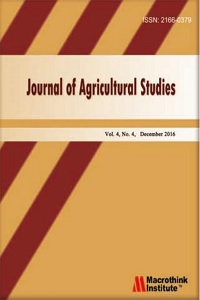The Role of Respondents’ Market Participation in Consumer Acceptance of Seeds and Grains of an Iron-Enriched Bean Variety in Guatemala
Abstract
This study introduces respondent’s market participation on the analysis of the consumer acceptance of biofortified beans. Biofortification is a complementary strategy to fight iron deficiencies mainly in populations who usually produce and consume their own beans. As most of biofortification’s target population and consumer acceptance studies participants are farmers who produce and consume their own food, their evaluation as producers hasn’t yet been evaluated. The evaluation will depend on the respondents’ market participation. The aims of this study are: (i) to compare the consumer acceptance results of two different studies, one evaluating grain and the other evaluating seed of an iron-enriched bean variety; (ii) to analyze how market participation influences respondents’ preferences and willingness to pay (WTP); and (iii) to evaluate how agronomic and sensory evaluation are defined by market participation. Two data sets from studies evaluating the consumer’s acceptance of an iron-enriched bean variety, one testing seed, conducted with 360 households in Huehuetenango in 2013 and the other testing grain, with 322 beans producers in 8 departments in Guatemala, were used for this purpose. Results indicate that there are differences in how respondents valued the iron-enriched bean variety attributes, and this depended on if a seed or grain was tested and on respondents’ market participation. The link between market participation and the acceptance of the iron-enriched bean variety was validated by an econometric analysis. Results are relevant for future research on consumer acceptance of biofortified crops, identifying if crops or seed must be tasted based on the respondents’ profile.

